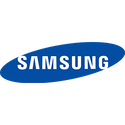
Micron at the 2025 CES: Scripting a Strong Comeback to the Client and PC-DIY Segments
Micron at the 2025 International CES showed us product that hint at the company planning a strong comeback to the client and PC-DIY market segments. The company's Crucial brand is already a high-volume player in the client segment, but the company never really approached the enthusiast segment. Products like the company's new T705 Pro and P510 NVMe SSDs, and DDR5 Pro Overclocking memory, seek to change this. We begin our tour with PC memory, and the DDR5 Pro OC CUDIMMs. Crucial has jumped onto the CKD bandwagon, introducing memory modules and kits that come with DDR5-6400 out of the box, but which are geared for manual overclocking to take advantage of the 1β DRAM chips underneath (hence the name).
The company also showed us their first DDR5 CSODIMM suitable for the next generation of notebooks with HX-segment processors. This module comes with a CKD and a DDR5-6400 JEDEC-standard SPD profile out of the box. Lastly, there's the Micron-branded LPCAMM2, which comes in speeds of up to LPDDR5X-8533, and is suitable for the next generation of ultraportables.
The company also showed us their first DDR5 CSODIMM suitable for the next generation of notebooks with HX-segment processors. This module comes with a CKD and a DDR5-6400 JEDEC-standard SPD profile out of the box. Lastly, there's the Micron-branded LPCAMM2, which comes in speeds of up to LPDDR5X-8533, and is suitable for the next generation of ultraportables.























































